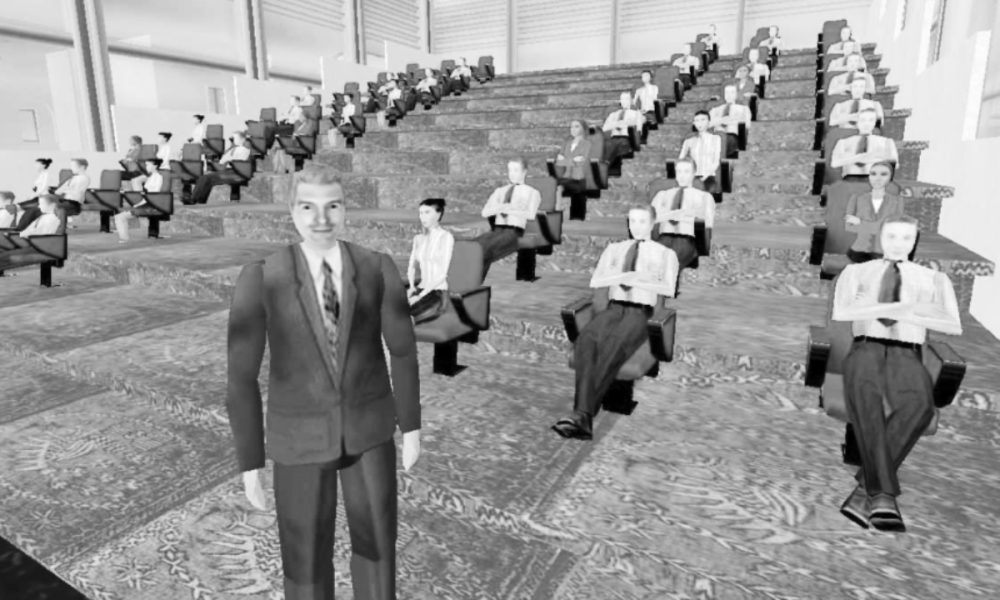How do we navigate working and learning in the metaverse?


The metaverse is a collective virtual shared space, which is created by the convergence of virtually enhanced physical reality and physically persistent virtual space. The term was coined by science fiction author Neal Stephenson in his 1992 novel Snow Crash. It is a virtual world populated by humans through their virtual representations or ‘avatars’. The metaverse is presented as a place where people can interact with each other and with virtual objects and artificial intelligence in the digital environment in real-time. The concept of the metaverse is often compared to that of the Matrix, a virtual reality world depicted in the science fiction film of the same name.
My interest towards the metaverse dates back about twenty years ago, although the metaverse what not called as such at that time. By the turn of the century, the computational power of PCs and internet connections had become sufficiently fast so that 3D engines could be effectively run for online interactions. I jumped into the opportunity that was offered by one of the early virtual environments called Active Worlds. I played around by polishing my avatar, constructing virtual buildings and furniture, and chatting with a few other tech-savvy friends. With one of them, we also convened a virtual webinar on business strategy and policy for university students in May 2005 (a snapshot of the virtual classroom in shown in Figure 1).
Nowadays, the metaverse consists of several virtual platforms, from Meta’s Horizon Worlds to Second Life, from VR Chat to Fortnite, from Minecraft to Roblox. Most of metaverse applications seem confined to the realm of gaming so far, but the size of the virtual reality (and augmented reality) industry has become noticeable, with an estimated US$28 billion worldwide (Statista, 2022). About 51% of Generation Z individuals (i.e., those born between late 1990s and early 2010s) and 48% of Millennials (i.e., those born between early 1980s and mid-1990s) expect that part of work will be carried out in the metaverse in the near future (the share is 37% among Generation X – those born between mid-1960s and early 1980s – and 28% among Boomers – those born between mid-1940s and mid-1960s) (Microsoft, 2022).
The rise of interest towards the metaverse also relates to the potential use of the virtual environment in education. Research on this topic has been limited so far (Zhang et al., 2022), but there are expectations that the metaverse can be helpful in various areas, from blended learning to language learning, competency-based education, and inclusive education. The metaverse can help teaching in innovative ways by making students connect in an immersive virtual campus, stimulating the development of real-world skills, facilitating imagination and exploration through visualisation and storytelling, building capabilities by simulating challenging situations, and improving accessibility for people with disabilities (World Bank, 2022). Interaction in the virtual environment can also generate plenty of data, which can help analyse learning performance and design more effective teaching and training activities.
The opportunities and challenges that are posed by working and learning in the virtual environment are carefully considered in the MSc programmes of the School of Finance and Management at SOAS University of London. The metaverse must be taken seriously in business, finance, management, and public policy. The virtual environment can help design new products, deliver services, and hold meetings in innovative ways. Applications of the metaverse also pose various issues, however, including lack of privacy, inequality of access, limited social interaction, and over-dependence on technology. Probably it will all boil down to pragmatism: insofar as working and learning virtually will be more efficient and effective than in person, arguably on a case-by-case basis, innovation will supplant resistance and scepticism.
About the author
Dr Alberto Asquer is the Director of Public Policy & Management and Public Financial Management programmes for the Centre for Financial and Management Studies and a Senior Lecturer in Public Policy and Management at the School of Finance and Management.




